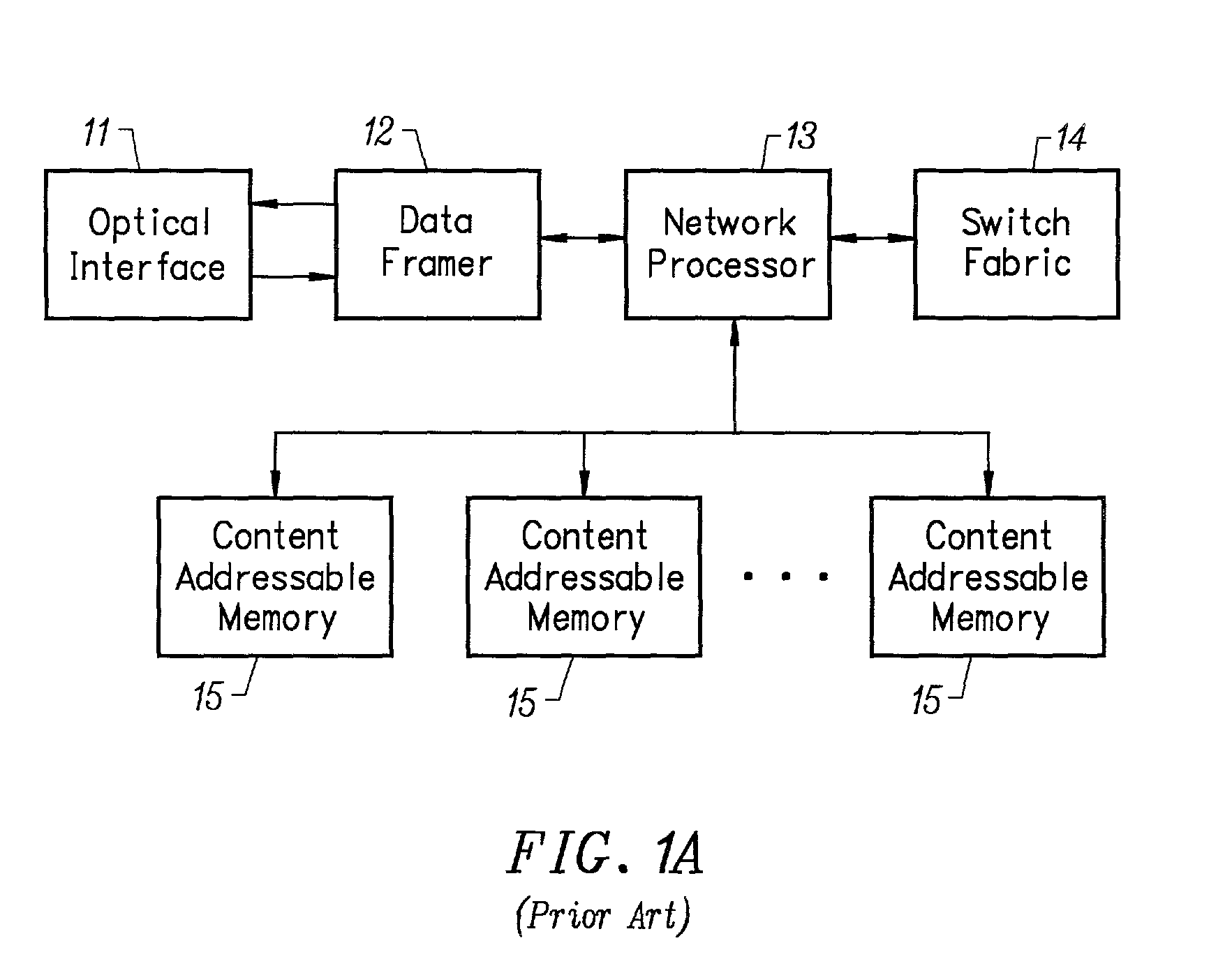High speed data classification system
a data classification and high-speed technology, applied in the field of computer networks, can solve the problems of increasing difficulty in the job of performing packet classification
- Summary
- Abstract
- Description
- Claims
- Application Information
AI Technical Summary
Benefits of technology
Problems solved by technology
Method used
Image
Examples
Embodiment Construction
[0057]The herein disclosed system is used for ultra-high speed classification of data that have been organized into a serial or parallel data streams. The presently preferred embodiment of the invention provides a system that operates in the receive path, where electronic data are provided by the optical interface to a data framer. In one embodiment, the invention incorporates unique features into a traditional optical data framer chip and relies on a complex ASIC to permit the user to differentiate between up to 10,000 different patterns at light speed. One purpose of the general purpose system disclosed herein is to eliminate the need for costly and power consumptive content addressable memory systems, or customer pattern specific ASICs, to perform network packet classification. The system operates on a principle of adaptive programmable randomization to permit a differentiation between the input vectors to be made. The invention dramatically reduces the processing burden required...
PUM
 Login to View More
Login to View More Abstract
Description
Claims
Application Information
 Login to View More
Login to View More - R&D
- Intellectual Property
- Life Sciences
- Materials
- Tech Scout
- Unparalleled Data Quality
- Higher Quality Content
- 60% Fewer Hallucinations
Browse by: Latest US Patents, China's latest patents, Technical Efficacy Thesaurus, Application Domain, Technology Topic, Popular Technical Reports.
© 2025 PatSnap. All rights reserved.Legal|Privacy policy|Modern Slavery Act Transparency Statement|Sitemap|About US| Contact US: help@patsnap.com



